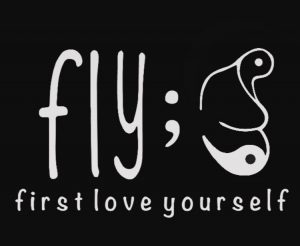
Athletes Connected caught up with rower and Student-Athlete Advisory Council (SAAC) Mental Health Liaison Ally Eggleton. Ally is a senior and shares her mental health story, how she got involved with SAAC and what she does to stay centered.
The Athletes Connected program recognizes the many different entities that factor into student-athlete mental health. As part of our Q&A series, Athletes Connected shares how coaches, administrators, athletic trainers and other athletic staff approach their roles in the lives of student-athlete health.
See our previous Q&A posts:
- Former U-M senior associate athletic trainer Jeremy Marra
- U-M head diving coach Mike Hilde
- Runner Ben Flanagan
- Gymnast Polina Shchennikova
I’m so lucky because through athletics, the mental health resources are superb. The Athletics Counseling Team (ACT) has been so crucial to my success. Whenever I need something or I have a bad day I can shoot my counselor a text she gets right back to me, either to schedule an appointment or with words of encouragement.
Q: What was your introduction to mental health?
A: My introduction to mental health in the 8th grade, I stumbled across Goldberg’s depression test online and took it because I feel like it might be something interesting. It came back that I was severely depressed. I knew the way I was feeling wasn’t very normal to feel. So I’ve been struggling with depression since before the 8th grade, but that was when I first found out.
I didn’t tell anyone until junior year of high school. That’s when I started getting help. Through that process and in college I developed a passion for helping kids who are like me. That’s where my interest in psychology has come from and my interest in the mental health field and why I want to become a clinical therapist.
Q: Since being at Michigan, how have folks aided your mental health for the better?
A: I’m so lucky because through athletics, the mental health resources are superb. The Athletics Counseling Team (ACT) has been so crucial to my success. Whenever I need something or I have a bad day I can shoot my counselor a text she gets right back to me, either to schedule an appointment or with words of encouragement. My coaches and trainers and counselors have been good if I’m scared about something. Michigan Athletics really prioritize the health of its athletes in every sense of the word. It’s been so nice to have that support network behind me and that I can reach out if I need anything.
Freshman year, the Athletes Connected wellness group was an amazing resource. I was always a big participant. Knowing I had that support put me at ease. It made it so that I was willing and able to put myself in position to reach out and get help.
Q: How did you become a mental health liaison?
A: I know that the two SAAC mental health representatives graduated so I saw that there was an opening for it. That was when Rachel Amity (Athletes Connected program coordinator) reached out to me, and told me that I was recommended for the position. It was something that I knew I wanted to do, but I didn’t know how to get into it. I’m glad that I’m able to do it.
Q: What are some of the goals that you and your fellow SAAC members have for mental health for the 2020-21 year?
A: We have a lot of things in the works that we’re trying to do. We want to continue spreading the awareness for athlete mental health. I partnered with Hidden Opponent, founded by former USC volleyball player Victoria Garrick, which is a large mental health advocacy group. They have great ideas, resources, panels and talks. We really want, depending on how games and meets and races go, to do some mental health dedicated events sponsored by SAAC to push that mental health awareness. Things like wear lime green ribbons, t-shirts, etc.
UNCut, which was started at UNC, is another really cool sub-organization that I’d like to start through SAAC to tell athlete stories about mental health and wellbeing. I want people to know that it’s really OK to struggle, that we all struggle in different ways, that you’re not going through it alone and to try and make you the best person you can be.
 Q: Obviously 2020 has been thrown for a loop. What are you doing to stay mentally well?
Q: Obviously 2020 has been thrown for a loop. What are you doing to stay mentally well?
A: I’ve been leaning on my teammates and my housemates and best friends. We talk E + R = O.
Event
Response
Outcome
The only thing I can control during COVID is how I react to it. It’s really what I’ve been doing as an anchoring part. The power is in my hands even when it feels like it’s so out of my hands.
Q: Are there any other ways you’ve been helping others during the pandemic?
A: A big one I’ve been trying to reach out to those who are closest to me, especially when on campus. I’ve continued training with my team. We don’t have captains, we have senior leaders where we split the team into smaller families and reach out to freshmen and help them out. Really, just trying to spread awareness that E + R = O, making sure that we’re all being kind to others and kind to ourselves.
Q: In terms of performance, how do you get into a good headspace for competition?
A: The biggest thing for me is to have fun and remember, rowing to me is such a cool sport to me. We use “Why” statements. The reason I row is that there’s no better feeling than being at the start line with 4 or 8 other girls and putting it all together, going through 2K meters of pure hell. I do it for my team, for the girls around me. Whenever I remind myself of that, it just soothes me a bit.
Q: What has been your proudest achievement at U-M?
A: I think the obvious one is my sophomore year our team won Big Tens and placed 3rd at NCAAs. Building off that, the reason we did so well that year was the team culture that our seniors built. My proudest achievement was being a part of a team that loves each other so much that even when we’re not the fastest on paper, we can still win championships together.



 Q: What is your vision?
Q: What is your vision?













 Did some of those sound familiar? Take a moment to reflect on the times that you may have found yourself thinking in these ways. Did it change your feelings, emotions, or ability to perform academically, socially, or physically? If so, you are not alone. These cognitive distortions are common, but in their more extreme forms, they can be harmful to our well being. Luckily, there are a few steps you can take to help recognize them and reduce the harm they cause.
Did some of those sound familiar? Take a moment to reflect on the times that you may have found yourself thinking in these ways. Did it change your feelings, emotions, or ability to perform academically, socially, or physically? If so, you are not alone. These cognitive distortions are common, but in their more extreme forms, they can be harmful to our well being. Luckily, there are a few steps you can take to help recognize them and reduce the harm they cause.

 It Starts with Me
It Starts with Me